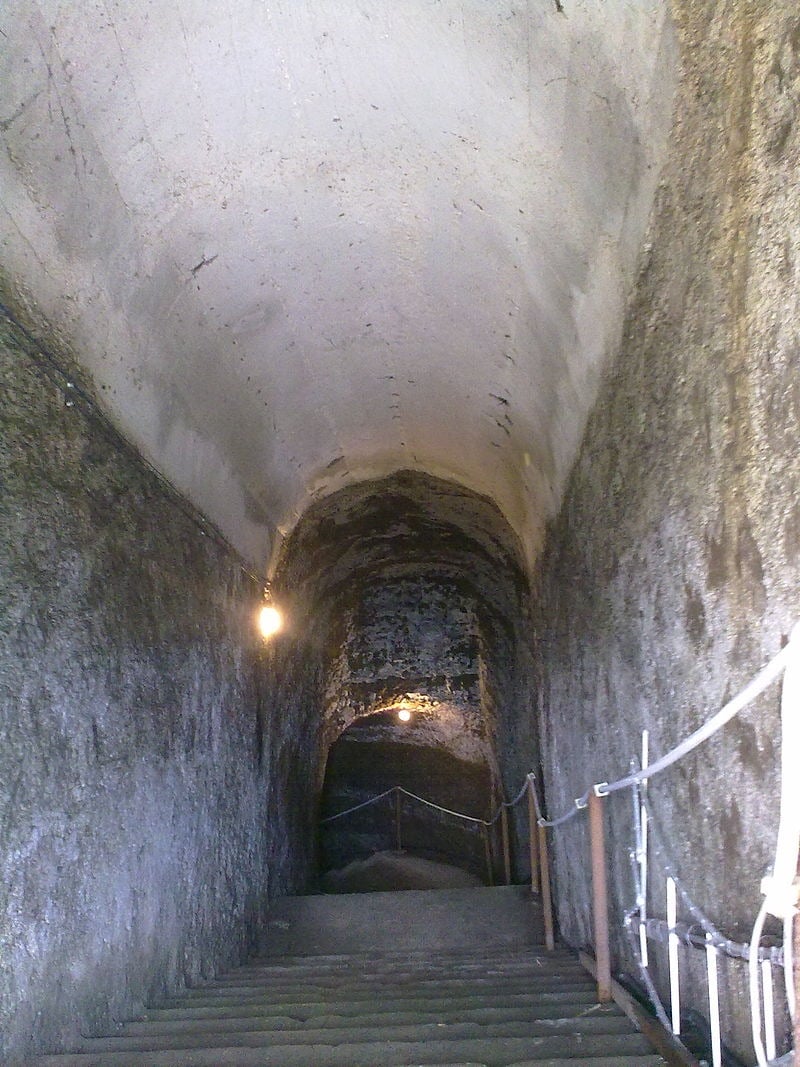The Colleferro Air Raid Shelters: 6-Kilometer Temporary Home For The Town’s Residents During The War
Beneath the town of Colleferro in Lazio, there’s a hidden network of tunnels that once served as air raid shelters during World War II.
The Colleferro air raid shelters, stretching over 6 kilometers, provided safety and shelter to the town’s residents during the war.
These tunnels, accessible from 15 different areas of the city, are accessible from 15 different parts of the city.

The Birth of the Shelters
Before Colleferro was even a town, these tunnels existed as quarries, extracting pozzolana—volcanic ash used in building materials.
The quarries were initially dug to build the first homes for workers of the Bombrini Parodi Delfino (BPD) munitions factory.
As tensions in Europe escalated and the threat of war loomed, the quarries were quickly turned into air raid shelters.
By the time Italy entered the war in June 1940, the tunnels were hastily equipped with benches and basic amenities, ready to protect the townspeople from bombings.

The Shelter System
The air raid shelters were more than just a place to hide; they became a temporary home for many.
The shelter system was divided into two main sections: “Villaggio Vecchio” and “Villaggio Nuovo.”
Villaggio Vecchio, located beneath the Santa Barbara neighborhood, was designated exclusively for BPD employees to minimize the risk of disease spread.
In contrast, Villaggio Nuovo, under the Colle Sant’Antonino area, was open to all citizens and equipped with essential services.

Life in the Tunnels
Life continued underground in surprising ways.
There was an infirmary complete with a delivery room, a chapel where mass and other sacraments were conducted, a municipal registry office, and even a small tavern.
Citizens bartered for necessities in a makeshift market, and over time, a close-knit community developed in the tunnels.

Conditions in the tunnels were tough.
The constant dampness, with humidity levels often reaching 100%, necessitated the covering of walls with tar paper.
As more families moved into the shelters, space became scarce, with some lucky enough to carve out small alcoves to serve as personal living quarters.
Despite the cramped and stifling conditions, the tunnels offered much-needed safety from the bombings above.

The War and Its Aftermath
As the war went on, Colleferro was heavily bombed.
Homes, factories, and vital infrastructure were destroyed.
Some citizens lost their lives while trying to find food or other supplies outside.
But the shelters continued to protect those inside.

In June 1944, the Allies liberated Colleferro.
The townspeople were advised to stay in the shelters a bit longer to avoid any remaining dangers.
After the war ended, the tunnels were closed off, with some sections later used for mushroom farming—a peaceful return to their original use as quarries.

The Shelters Were Reopened
For many years, the shelters remained closed and largely forgotten.
They were reopened on December 4, 1985, to mark the 50th anniversary of the town’s founding.
Today, visitors can explore these tunnels through guided tours available on Saturday mornings for just 50 cents.
During the tours, you can see parts of the tunnels and markings on the walls that once guided people to safety.
While many of the original doors are sealed and not all artifacts have survived, the displays help tell the story of life in the shelters during the war.
The tour lasts about an hour and offers a moving glimpse into the past.

A Place For Cultural Events
Since 2003, the Colleferro shelters have hosted a living nativity scene every year, turning the tunnels into a vibrant representation of ancient times.
Visitors can see figures dressed in period clothing and recreations of traditional crafts.
You can even use “Drammes,” the currency of the time, to buy handmade goods, making the experience more interactive.
The tunnels also host theatrical performances and unique events like an archery competition called “Night…by day.”
These events bring history to life and make the shelters a place of both remembrance and celebration.

